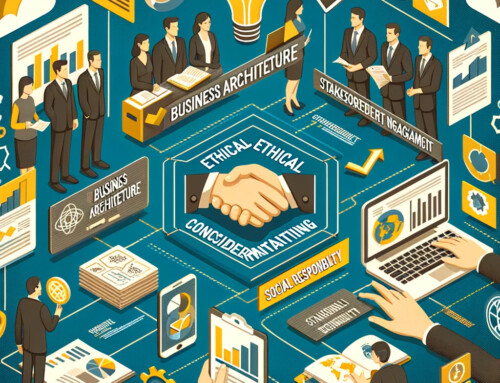
List of Enterprise Architecture Frameworks
- The Open Group Architectural Framework (TOGAF): Established in 1995 by The Open Group, TOGAF is arguably the most popular enterprise architecture framework worldwide. It’s widely accepted due to its adaptability and flexibility, as it can be tailored to meet an organization’s specific needs. The strength of TOGAF lies in its four interlinked domains: Business, Application, Data, and Technology. However, TOGAF can be complex and time-consuming to implement, and its broad focus may lack the detail required for specific contexts.
- Zachman Framework: Introduced by John Zachman in the 1980s, it’s often considered the original enterprise architecture framework. The Zachman Framework is notable for its rigor and depth, addressing a wide range of stakeholders and perspectives. It’s also technology-agnostic. However, it’s often criticized for its complexity and lack of practical implementation guidance and can be seen as overly theoretical.
- Federal Enterprise Architecture (FEA): Developed by the U.S. Federal government in 1996, FEA is detailed and best suited for large, complex organizations. It provides a standard methodology for IT acquisition and management. One of its strengths is a strong focus on outcomes and results. On the downside, it can be bureaucratic and overly complex for smaller organizations.
- Gartner Enterprise Architecture Framework: Introduced by the Gartner research company, this principles-based framework is easy to understand and apply. It is flexible, scalable, and technology-neutral. However, it might be too high-level and lack the detail required for more complex or specialized organizations.
- Business Architecture Guild’s BIZBOK (Business Architecture Body of Knowledge): Created by the Business Architecture Guild, this framework focuses on business strategy and provides a clear path for aligning business with IT. It’s practical and outcome-oriented but may lack the broad coverage of IT and technology aspects found in other frameworks.
- Department of Defense Architecture Framework (DoDAF): Developed by the U.S. Department of Defense, DoDAF is robust and comprehensive, particularly for defense systems. It’s heavily focused on secure systems and reliable technology. However, it may be too complex and specific for many commercial organizations.
- ArchiMate: Developed by The Open Group, this is a modeling language rather than an entire framework designed to represent complex systems visually. It’s compatible with TOGAF. However, it requires substantial training to use effectively.
- Sherwood Applied Business Security Architecture (SABSA): Originating in the 1990s, SABSA is focused on security, making it unique among these frameworks. It’s vital in risk and security management but lacks broader coverage of IT architecture compared to other frameworks.
- Service-Oriented Modeling Framework (SOMF): Introduced by Michael Bell, SOMF focuses on service-oriented architecture (SOA). It’s vital in integrating business and IT through services but can be limited in applicability outside SOA contexts.
- Integration Definition for Function Modeling (IDEF): Dating back to the 1970s and developed by the U.S. Air Force, IDEF is a set of modeling languages. IDEF is broad and versatile, but it’s more a modeling language family than a complete EA framework.
- Purdue Enterprise Reference Architecture (PERA): Developed at Purdue University, PERA is focused on manufacturing and industrial contexts. It’s practical and outcome-oriented for these industries but may not be applicable in other contexts.
- Sparx Enterprise Architect: This software tool is based on UML (Unified Modeling Language) for visualizing, designing, and constructing software systems. While it provides various powerful modeling tools, it doesn’t offer a methodology for EA.
- Object-Oriented Analysis and Design (OOAD): A technical framework used to analyze and design applications from the perspective of the objects in the system. While this is a powerful paradigm for software development, it’s not an enterprise architecture framework per se.
- Australian Government Architecture (AGA): Developed by the Australian Government, this framework is designed to provide consistency in government service delivery. It’s robust in public service contexts, but its applicability may be limited outside of this context.
While it’s challenging to compare all these enterprise architecture frameworks directly because they each serve different purposes and contexts, some general observations can be made. For example, frameworks like TOGAF and FEA are comprehensive and designed to fit large, complex organizations with diverse needs. In contrast, something like SOMF or SABSA is more specific in focus. Zachman is theoretical and detailed, while Gartner is more high-level and flexible. Business-oriented frameworks like BIZBOK contrast with more technology-focused ones like DoDAF. The key is understanding the organization’s needs, context, and capabilities and choosing the appropriate framework (or combination of frameworks) that best serves those needs.


